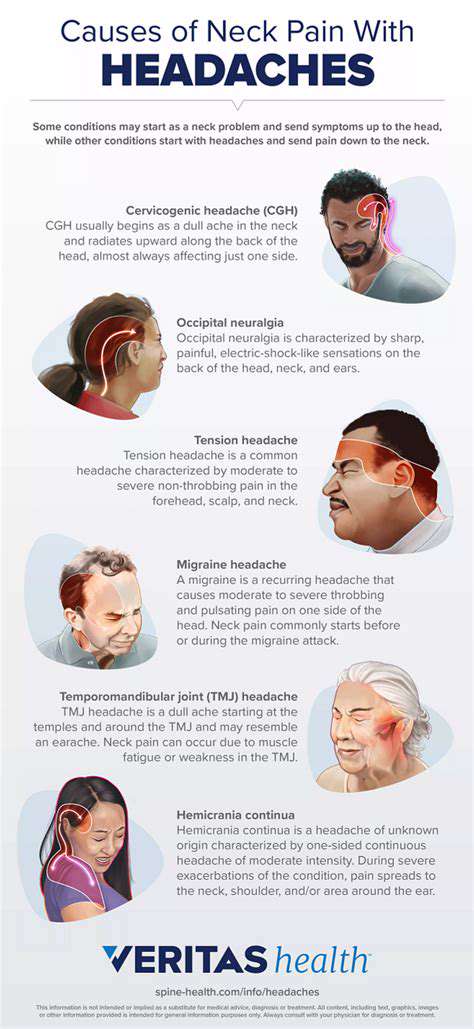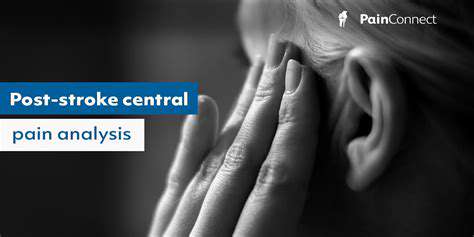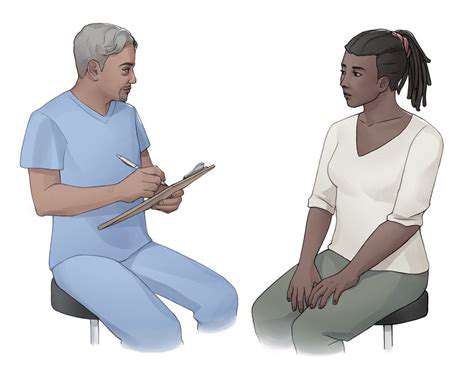Head Hurts in the Back: Causes and Effective Treatments
Common Causes of Back Head Pain

Muscle Strain and Tension
One of the most common causes of pain in the back of the head is Muscle Strain and Tension. This can occur due to poor posture, especially if you spend long hours at a desk or on a computer. Muscle fatigue can lead to tightness in the neck and upper back, which often translates into headaches. Additionally, stress and anxiety can contribute to muscle tension, resulting in discomfort at the base of the skull. Recognizing the factors that lead to strain is crucial in managing and alleviating the pain.
In many cases, individuals may not even realize they are experiencing muscle tension until the pain becomes noticeable. This type of pain can manifest as a dull ache or sharp pain, influencing your ability to focus. Regular breaks, stretching, and applying heat can help relax tight muscles and reduce overall tension. To prevent muscle strain, maintaining good posture and ergonomic setups is essential.
If you suspect muscle strain as the culprit for your headaches, consider incorporating relaxation techniques or gentle exercise into your routine. Yoga and mindfulness practices can greatly assist in releasing tension from your muscles. Furthermore, consulting a physical therapist can provide tailored exercises to strengthen the affected areas and prevent future strain.
Over time, muscle tension can become a chronic issue, leading to recurrent headaches. Implementing preventive measures can significantly improve your quality of life. Be mindful of your posture and listen to your body; if you feel discomfort, address it early.
Sinus Issues and Infections
Sinus issues can often be a hidden cause of back head pain. When the sinuses become inflamed or infected, they can cause pressure that radiates to different areas of the head. Allergic reactions and sinus infections can create a sensation of fullness that impacts not only the forehead but also the back of the head. This condition can be accompanied by other symptoms such as nasal congestion, facial pain, and fever.
Types of sinusitis include acute, chronic, and recurrent sinus infections, which vary in their duration and severity. If you notice persistent pressure along with nasal symptoms, it may be time to seek medical advice. Treatment options typically involve decongestants or saline nasal sprays to alleviate sinus pressure. In some cases, antibiotics may be necessary to address underlying infections.
For individuals prone to sinus issues, preventive measures such as staying hydrated and avoiding known allergens can help reduce the frequency of headaches. Humidifiers can also contribute to a more comfortable environment by keeping air moist, thereby reducing sinus irritation.
If back head pain persists despite treatment for sinus issues, it is vital to explore other potential underlying causes. Comprehensive evaluations by a healthcare provider can ensure proper diagnosis and treatment tailored to your needs. Being aware of your sinuses and how they relate to headaches is essential for effective management.
Cervicogenic Headaches
Cervicogenic headaches are another significant cause of pain experienced in the back of the head. This type of headache originates from neck disorders or issues, such as cervical spine degeneration or injuries. It is characterized by pain that usually starts in the neck and moves upward to the back of the head. This often leads to discomfort while moving the head or neck.
Identifying cervicogenic headaches can be challenging, as symptoms may overlap with other headache types. Typically, these headaches affect one side of the head and are often accompanied by neck stiffness. Proper diagnosis usually requires imaging or physical examinations performed by healthcare professionals.
Treatments for cervicogenic headaches may include physiotherapy, manual therapy, and prescribed exercises aimed at strengthening the neck muscles. In severe cases, medication or corticosteroid injections might be needed to reduce inflammation.
Incorporating lifestyle modifications, such as ergonomic adjustments and regular physical activity, can also help lower the risk of developing these types of headaches. Being proactive about neck health is essential, as untreated issues can lead to more chronic headaches. Ultimately, understanding the relationship between neck pain and headaches is vital for effective treatment.
When to Seek Medical Attention
Understanding When Symptoms Worsen
Recognizing when a headache is more than just a common inconvenience is crucial for effective treatment. If your head pain intensifies or persists despite over-the-counter medicine, it may warrant a medical evaluation. This progression can indicate underlying conditions that need immediate attention.
Headaches that escalate in frequency or severity should be taken seriously. For instance, if you experience a sudden, severe headache unlike any you've had before, it could signal a more serious issue, such as an aneurysm or hemorrhage. Seeking prompt medical care in such cases can be life-saving.
An accompanying fever, stiff neck, or nausea can also help you decide to seek help sooner. These signs could indicate an infection or another serious condition that warrants urgent medical evaluation. It's always better to err on the side of caution.
Additionally, headaches that interfere with your daily activities or work productivity may indicate a chronic issue that needs addressing. This situation often requires a comprehensive treatment plan crafted with your healthcare provider to ensure a balanced approach to management.
Lastly, consider any changes in your usual headache patterns. If you have a history of migraines and notice new symptoms or triggers, it's crucial to consult with a healthcare professional to discuss your concerns and assess any necessary changes to your treatment regimen.
Identifying Red Flags for Headaches
Headaches may feel like a common ailment, but specific warning signs should never be overlooked. Sudden onset headaches, especially if they are severe and reach peak intensity within minutes, should prompt immediate medical consultation.
Another red flag could be accompanying neurological symptoms, such as vision changes, difficulty speaking, or weakness on one side of the body. These can indicate a potential stroke or other critical neurological events, necessitating urgent care.
Headaches triggered by a head injury, particularly if you lose consciousness or experience prolonged confusion, are also serious. In such scenarios, you should seek medical assessment promptly, as they may involve concussions or more severe brain injuries.
Persistent headaches lasting longer than a few days, especially if you are unable to find relief through typical treatments, indicate a need for professional evaluation to rule out other health concerns.
Moreover, headaches that worsen with physical activity, coughing, or bending down can suggest increased pressure within the skull, which is a medical emergency. Immediate medical attention is essential to address potential underlying causes.
Steps to Take Before Seeking Medical Help
Before reaching out to a healthcare provider, try to take note of your headache patterns. Keeping a headache diary can help track the frequency, intensity, and duration of your headaches, as well as any potential triggers and relief measures you've attempted. This information can be invaluable in diagnosing the underlying issue.
It is also beneficial to assess your lifestyle and identify any factors that might contribute to your headaches. Consider reviewing your hydration levels, sleep patterns, stress management techniques, and dietary habits. Adjusting these components may provide relief and influence the decision to seek additional help.
Over-the-counter pain relief options, like ibuprofen or acetaminophen, can be effective for mild headaches if used appropriately. However, avoid frequent use, as it can lead to rebound headaches. If you've tried home remedy solutions without relief, it's time to consult a healthcare professional.
Prioritize self-care as well. Engage in relaxation methods like meditation or yoga, which can help alleviate tension headaches as part of your coping strategy. Maintaining a routine of regular exercise can also significantly impact headache management.
If you decide to call your doctor, prepare for your appointment by documenting all relevant information including symptoms, duration, frequency, and any treatments you've tried. This preparation will facilitate a more efficient and effective consultation, ensuring that your healthcare provider can assess your situation accurately.
Treatment Options for Back Head Pain

Treatment Approaches for Muscle Tension
Muscle tension in the neck and shoulders can lead to pain radiating to the back of the head. Applying heat or cold therapy can provide immediate relief. Heat helps by relaxing tight muscles, while cold therapy reduces inflammation.
Moreover, gentle stretching and exercises designed to relieve tension can be beneficial. These activities promote blood flow and can prevent stiffness, enhancing mobility and comfort.
Pharmacological Interventions
Over-the-counter pain relievers such as ibuprofen or acetaminophen are commonly used for treating back head pain. These medications can effectively reduce pain and inflammation, making daily activities more manageable.
For chronic pain, a healthcare provider might prescribe stronger medications or recommend alternative therapies. It's essential to consult a professional before starting any medication regimen to ensure safety and effectiveness.
Alternative Therapies
Many individuals find relief through alternative therapies like acupuncture and chiropractic adjustments. These treatments focus on realigning the body's structure and relieving pressure points that may contribute to head pain.
Additionally, mindfulness practices such as yoga and meditation can play a role in managing stress, which is often a significant contributor to muscle tension and pain. Regular practice can enhance overall well-being and reduce the frequency of headaches.
Preventative Measures
To minimize the risk of back head pain, maintaining good posture is crucial. Poor posture can strain the neck and shoulder muscles, leading to discomfort and pain over time.
Regular breaks during prolonged activities, especially when sitting at a desk, can help alleviate tension. Incorporating ergonomic solutions into your workspace can also significantly improve your posture and reduce pain.



